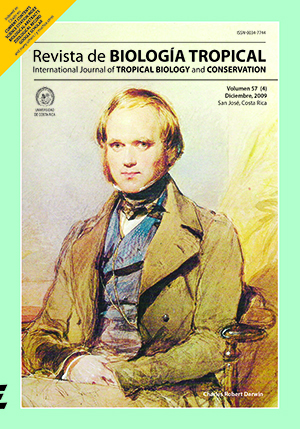Abstract
Currently,Montastraea annularis populations are suffer-ing from high partial mortality rates; yet few studies have determined type, frequency and intensity of natural lesions in situ. During a year we followed natural lesions that appeared on healthy ramets of a population on a degraded reef within a Marine Protected Area in Colombia, to infer the effect on population size structure. From September 2003 to September 2004, 94% of the ramets presented lesions caused by bleaching, predation; or algae, sponge and borrower interactions. Predation caused 47% of the lesions and algae 36%; most lesions (85%) were small (<5cm2), although some were bigger than 60cm2 (0.3%). Lesion recovery was high (83%), but 11.2% did not recover or grow. On 2.5% algae invasion was seen. Bleaching lesions affected more ramet area (>60% of its live tissue) and were evident from September to November, yet total recovery was found in three months. In contrast, lesions by algae (36%), showed less recovery (6.7%), and a tendency to grow in time. In general, percentage of affected tissue area of a ramet in any month was lower than 10%. Nevertheless from May to September, the area affected was larger (10-50%) due to an increase in frequency and abundance of preda-tion, bleaching and algal damage, and a decrease in recovery. At the end of the year, lesions that did not recover caused partial mortality in 25% of the ramets. Ramets with lesions shrunk throughout the year and by the end of year, 21% passed to a smaller class size.
##plugins.facebook.comentarios##

This work is licensed under a Creative Commons Attribution 4.0 International License.
Copyright (c) 2009 Revista de Biología Tropical






